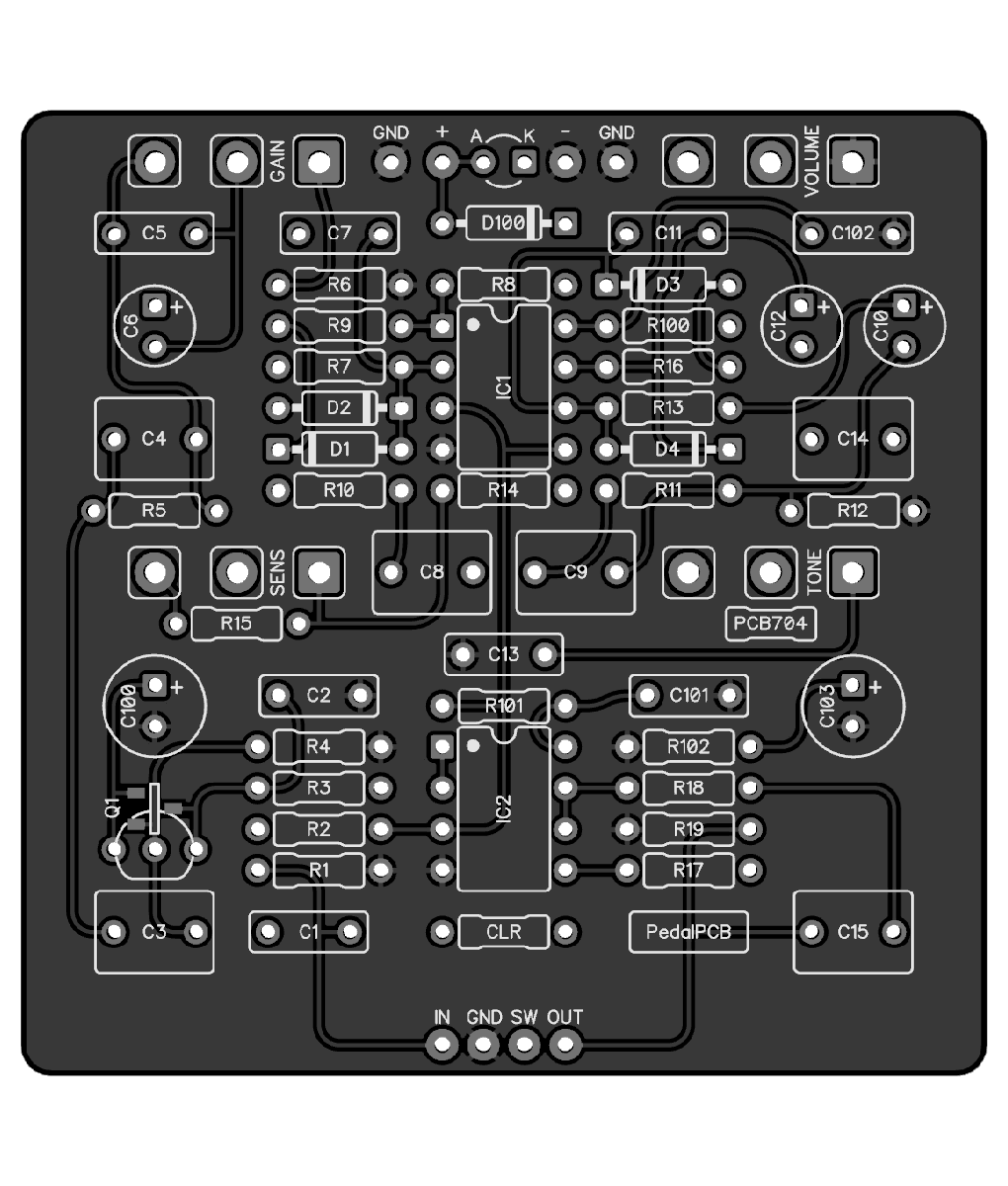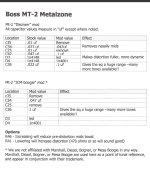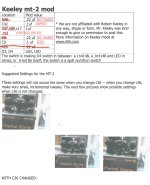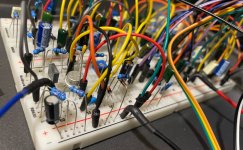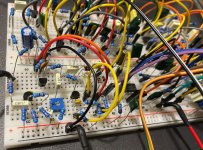owlexifry
Well-known member
i should have started breadboarding a long time ago.

it all started about 6 months ago when i wanted to start testing out some MP38 Ge transistors in basic circuits with a cheap 400 point breadboard and the brilliantly convenient ProtoBoard Micro.
then i finally 'got it' and realized why breadboarding even exists. (holy shit - i can just bang out a circuit real quick with no soldering bullshit, make super fast mods and then reuse all the parts for something else later)
I knew the time was coming that I'd have to sort out something bigger.
This became especially urgent as my Mofeta board hit the top of my que.
I'd already drilled the enclosure for it, and then my problem was - I've been pondering for some time as to how I really want to build it - e.g. Model feT vs Citadel - after referring to @TucsonSean 's excellent thread about building a Super Lead/1987 inspired circuit on the Mofeta board. (since the Model T and Super Lead/1987 circuit topologies are largely identical).
I also have a Golden Falk board, so I was wondering if I should even bother with a Super Lead type circuit. I almost posted one of those threads looking for opinions, and while I was typing it out I realized what I needed to do - just get on with it, and breadboard the Mofeta and then compare both.
Ordered some busboards from mouser and they landed last week.
As fantastic as the full size Protoboard looks, well, I needed a solution immediately.
- Basically, I just went with Chuck Bones baking tray idea, so I went to a thrift shop and grabbed one for $3.

- Fortunately I had some leftover 2"/2" angle/L-shape aluminium sitting in the shed.
- Cut two identical lengths of aluminium.
- clamped them together to form a U shape, drilled, and bolted them together, and bolted that U-piece to the baking tray.
- to ensure shielding effect, all mating surfaces between the x2 pieces of aluminium, and the baking tray were filed and sanded before fastening, for maximum continuity.
- measured, marked and drilled positions for jacks, pots, bypass switch and an outie DC jack.
- sanded the 'faceplate' surface down a few a grits (40 to 400) for a pleasant finish.
result:
then it was time to measure some MMBF5457 JFETs for the Mofeta/EAE Model T circuit build.

- soldered I/O wiring and grounds.
(input jack sleeve is star ground, I/O tip/signals coming off DPDT switch, power lead directly off DC jack)

to my great surprise:
- it actually worked the first try (with couple minor errors)
- sweet fuck all noise from this build. with both brite and normal gain turned up to 3pm or more, absolutely acceptable idle noise levels, very minimal. so stoked.
- had concerns about the non-stick coating interfering with the ground plane-shielding effect of the pan, but it appears to be fine with it intact. Still not really sure whether it makes a difference or not, but this build appears remarkably quiet considering how noisy some fuzz/distortion builds have been on my 400 point/ProtoBoard Micro.

fresh out the oven, sitting outside to cool after correcting errors

DEMO

it all started about 6 months ago when i wanted to start testing out some MP38 Ge transistors in basic circuits with a cheap 400 point breadboard and the brilliantly convenient ProtoBoard Micro.
then i finally 'got it' and realized why breadboarding even exists. (holy shit - i can just bang out a circuit real quick with no soldering bullshit, make super fast mods and then reuse all the parts for something else later)
I knew the time was coming that I'd have to sort out something bigger.
This became especially urgent as my Mofeta board hit the top of my que.
I'd already drilled the enclosure for it, and then my problem was - I've been pondering for some time as to how I really want to build it - e.g. Model feT vs Citadel - after referring to @TucsonSean 's excellent thread about building a Super Lead/1987 inspired circuit on the Mofeta board. (since the Model T and Super Lead/1987 circuit topologies are largely identical).
I also have a Golden Falk board, so I was wondering if I should even bother with a Super Lead type circuit. I almost posted one of those threads looking for opinions, and while I was typing it out I realized what I needed to do - just get on with it, and breadboard the Mofeta and then compare both.
Ordered some busboards from mouser and they landed last week.
As fantastic as the full size Protoboard looks, well, I needed a solution immediately.
- Basically, I just went with Chuck Bones baking tray idea, so I went to a thrift shop and grabbed one for $3.

- Fortunately I had some leftover 2"/2" angle/L-shape aluminium sitting in the shed.
- Cut two identical lengths of aluminium.
- clamped them together to form a U shape, drilled, and bolted them together, and bolted that U-piece to the baking tray.
- to ensure shielding effect, all mating surfaces between the x2 pieces of aluminium, and the baking tray were filed and sanded before fastening, for maximum continuity.
- measured, marked and drilled positions for jacks, pots, bypass switch and an outie DC jack.
- sanded the 'faceplate' surface down a few a grits (40 to 400) for a pleasant finish.
result:
then it was time to measure some MMBF5457 JFETs for the Mofeta/EAE Model T circuit build.

- soldered I/O wiring and grounds.
(input jack sleeve is star ground, I/O tip/signals coming off DPDT switch, power lead directly off DC jack)

to my great surprise:
- it actually worked the first try (with couple minor errors)
- sweet fuck all noise from this build. with both brite and normal gain turned up to 3pm or more, absolutely acceptable idle noise levels, very minimal. so stoked.
- had concerns about the non-stick coating interfering with the ground plane-shielding effect of the pan, but it appears to be fine with it intact. Still not really sure whether it makes a difference or not, but this build appears remarkably quiet considering how noisy some fuzz/distortion builds have been on my 400 point/ProtoBoard Micro.

fresh out the oven, sitting outside to cool after correcting errors

DEMO






